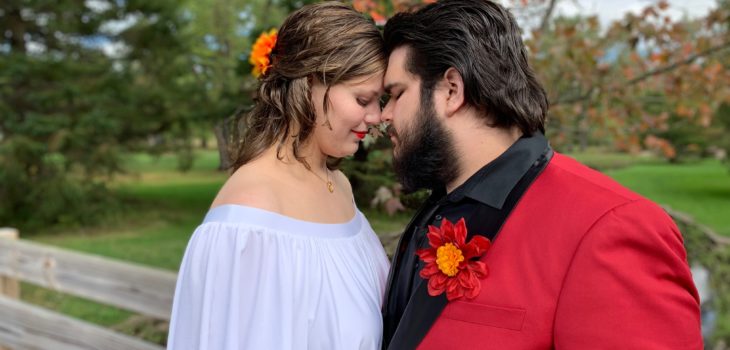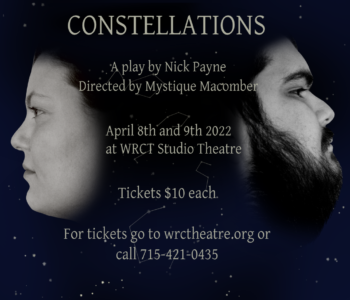
Friends are the family we choose, sometimes quite literally
Friends are the family we choose.
I’ve been pondering this recently, particularly when I knew I should make a speech at my daughter’s wedding. This sentiment struck me as something to talk about.
The quote “friends are the family we choose” is meant as a compliment for friends and friendship. But it’s also a nice way to say we may like our friends better than our families.
That wasn’t my intention, however. Instead, I wanted to focus on how a friend becomes family.
Because that’s what happens when you get married. You choose a friend to become family – literally.
My friends are like family
But my reflection goes deeper than that. It pushes against my thoughts and feelings for my friends – old and new.
Here’s what I’ve realized: I love my friends.
It’s a different love than what you feel for a romantic partner. Perhaps it comes closer to the love you feel for family members. But it’s not the same as love for your children – that falls into its own category.
Instead, I feel a love for my friends that warms my heart. When I spend time with them, I feel good. We listen and lift each other up. We laugh, cry and commiserate. Sometimes, we just act goofy. Together, we share our hopes and dreams. Reminiscing, creating new memories, living in the moment. Each time we meet, I can count on feeling good.
And I tell them I love them. Because I do.
Friends are the family we choose for life
Some have been friends for more than 30 years. Others, I’ve known for a year or less. Yet, we share a bond, a connection. They feel like family – like I can always count on them to be there for me.
Usually, that’s reserved for family members, those people we are connected to by blood – or marriage. There’s an expectation that family will always be there, and yet that’s not true, either. Just because we share common ancestors or gold bands doesn’t mean we will always see eye to eye, let alone “love” each other.
Friends are special. We choose them – and they choose us. We go together into a relationship with them, hoping we will change and grow into close friends – family, really.
Marriage unites friend as family
In marriage, you start with a friend. It grows into love, then you decide this is the person you want to wake up next to every day for the rest of your life. So, you get married.
Sounds romantic, doesn’t it? And it is. But if you’re married or have been, you know it takes more than that to make a marriage work. Because we continue to grow and change, and it’s important to allow ourselves and our partners to grow, but to also grow together.
We seem to be more forgiving of this in our friends. It’s OK if someone changes. Often, we applaud and encourage it. Maybe it’s because a friend changing doesn’t impact us quite as closely as a spouse. We have more at stake when it comes to the person we wed.
That’s part of the message I wish I could have better articulated during my brief speech at my daughter’s wedding to her husband. I won’t say marriage is hard, because it doesn’t have to be. It takes both people to be part of it, to communicate, to share, to grow, to change, to love. We need to accept this in ourselves and in our partners, too.
Keeping a friend who is family
I hope my daughter and her husband can remember they were friends first and to keep that friendship – that love – strong. To enjoy each other. To listen and lift each other up. Laugh, cry and commiserate. Just to act goofy. Then, to share hopes and dreams. Reminisce, create new memories and live in the moment. If they can help each other feel good each time they meet – every day they spend together – they will have the greatest friendship and marriage.
At the wedding, I wrapped up by welcoming Jerry into our family, and reminding both of them they have a family of friends they can count on. As I spoke, I thought of my friends and family, the ones I count on, who are there for me when I need them. My heart is full of love for all of them.
How to Be a Better Writer Tip
Tying the knot – or putting a bow on it
If you’ve been reading my blogs/columns for a while, you likely see my standard pattern. I introduce a topic, talk about it, maybe get into different aspects, then I wrap up using something from the beginning.
In this post, I used some examples of how my friends and I support each other. When I wrote it, I didn’t intend for it to be the wrap, but as I got to the end, it presented itself as a good way to tie the beginning to the end.
This often is my way of writing. I don’t necessarily plan where I’m going. Sometimes, I do, but more often, I have a vague idea of what I want to discuss and the points I wish to make.
But because I’ve done this for years, I look for ways to tie the beginning to the ending. Usually, it comes easily. If it’s clever, all the better, but usually I’m content to just get in a mention again that brings my article full circle.
You don’t have to do exactly the same in your writing. However, you don’t want to leave strings dangling, either.
I had an editor who liked the phrase to “put a bow on it.” It’s saying you have a tidy way to wrap up your story.
When people read content – fiction, non-fiction, news, whatever – they want to know what happened. Leaving questions unanswered is unsatisfactory to a reader. Perhaps you’ve read a book or seen a movie where a plot point was introduced then completely ignored. You’re left wondering what happened to a character or situation, and it’s not a pleasant feeling.
Are your endings satisfactory to readers? Or can you benefit from putting a bow on your work?



